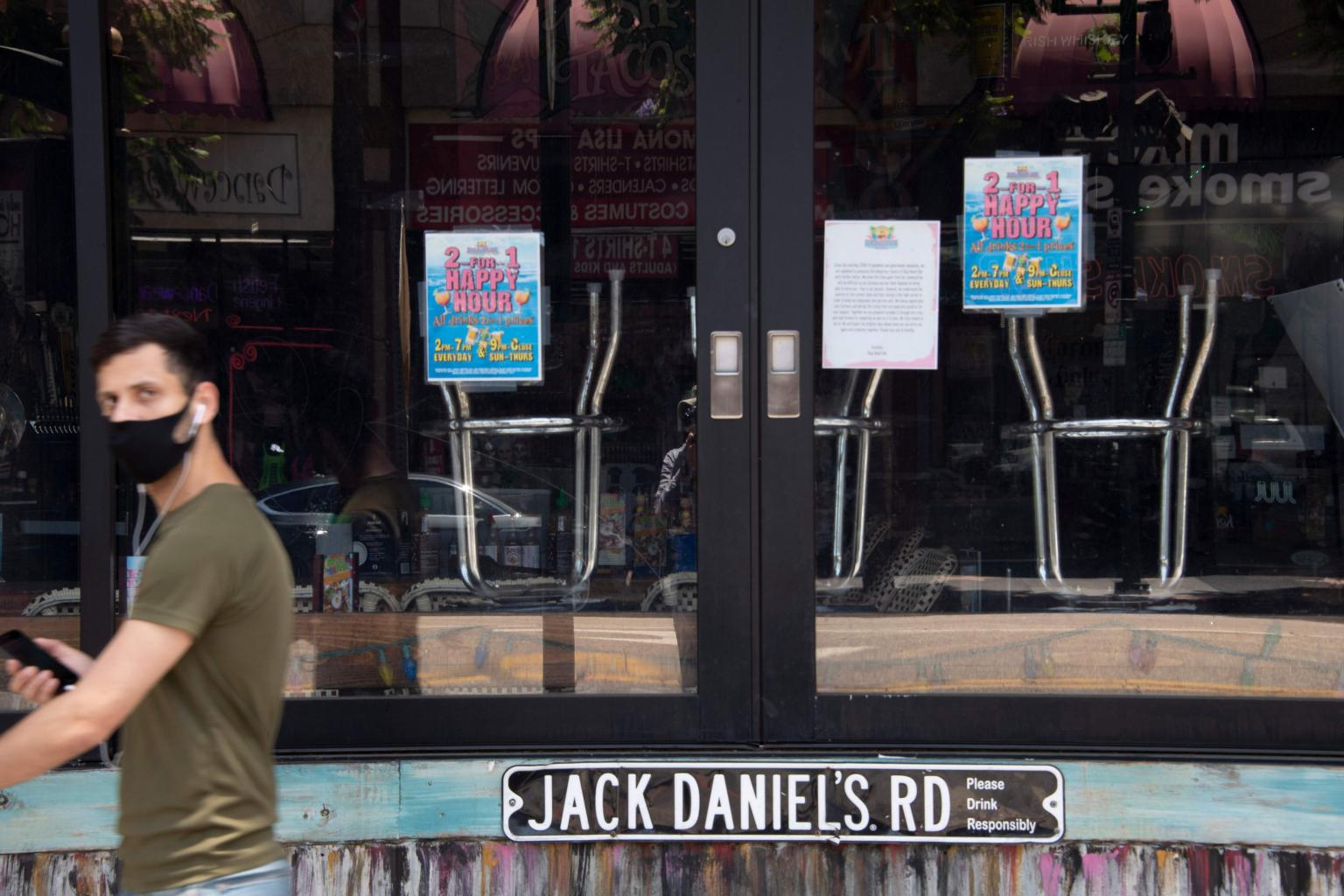California's new lockdown dims outlook for US economic growth in pandemic
Sign up now: Get ST's newsletters delivered to your inbox

During the course of May, California added just 141,600 jobs.
PHOTO: AFP
Follow topic:
NEW YORK (REUTERS) - California Governor Gavin Newsom's decision on Monday (July 13) to reimpose restrictions on bars, restaurants, gyms and even ordinary office work to tamp down a surge of coronavirus infections is dimming economic growth prospects for the nation as a whole.
Darkening the outlook further was the decision by California's two largest school districts - Los Angeles and San Diego - to conduct only online instruction when classes resume next month, a move that will make it challenging for parents of more than 825,000 students to return to work.
The Golden State, with 40 million people, employs more workers than any other state in the nation, and its production of goods and services is about equal to the combined output of Florida and Texas, two others states that have also seen resurgences of the virus.
After the Great Recession, California was the nation's inarguable job growth engine, creating about one in every seven jobs, more than any other state.
By comparison, over the course of the 12-year post-financial crisis expansion Texas created one of every eight US jobs, and Florida, about one of every 11.
In March, after becoming the first US state to impose a stay-at-home order in response to the coronavirus pandemic, California also became the nation's job-loss leader. Some 2.6 million jobs disappeared in March and April, about equal to the combined job losses in Texas and Florida.
The idea, of course, was to stop infections from getting out of control, trading a steep economic decline to create the conditions both for better public health and for a faster economic recovery.
So far, it hasn't worked out that way.
Many states began to reopen in May. California allowed businesses to resume activity at a slower pace than many states did. That shows in the most recent state-by-state jobs data: during the course May, California added just 141,600 jobs, versus 182,000 in Florida and 237,000 in Texas.
Since then, the virus has resurged in much of the country, with the biggest increases in Florida, Texas, Arizona and California, forcing governors in all of those states to reimpose some restrictions.
But none has gone as far as Mr Newsom did on Monday; and none of those states has near the footprint of California when it comes to economic heft on a national scale. Before the coronavirus crisis, the state accounted for about 14 per cent of the whole US economy.
With about 8,200 new infections daily and rising hospitalizations in California, Mr Newsom is shutting bars and banning indoor restaurant dining statewide, and closing gyms, hair salons and non-essential workplaces in counties where the vast majority of its population lives.
And with those new restrictions, the state's relatively meagre job gains so far could stall or even reverse.
Moreover on Monday, Los Angeles, the state's largest school district, and San Diego both announced they would not hold classes in-person come fall.
Speaking generally about schools and apart from the impact on education itself, "we'll have lower GDP, lower growth, higher unemployment if we are not able to get the kids back in school," Dallas Fed President Robert Kaplan said in an appearance earlier on Monday.

